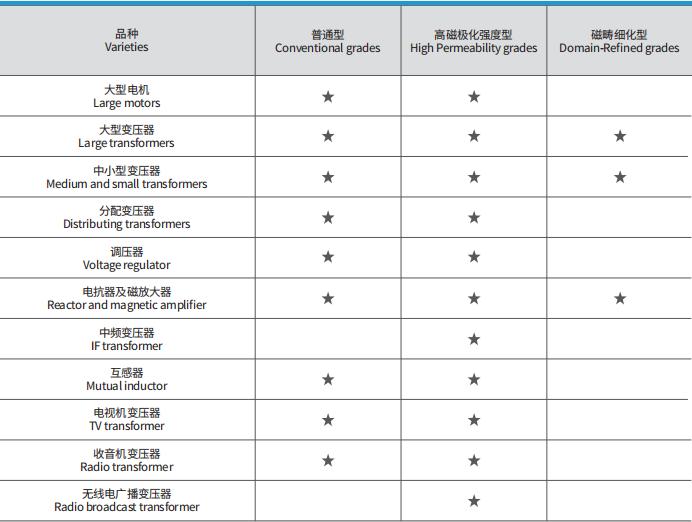

| Availability: | |
|---|---|
| Quantity: | |
Heat resistance: By adding specific alloying elements or using special heat treatment process, this silicon steel can maintain good mechanical strength and magnetic properties at higher temperatures, and is suitable for applications in high temperature environments.
Scratching: In order to further improve the magnetic properties, the surface of the silicon steel strip will be scratched. These fine notches help guide the grains inside the material to grow in a specific direction, thereby optimizing magnetic anisotropy, reducing iron loss and improving magnetic permeability.
Oriented structure: Unlike non-oriented silicon steel, the crystal structure of oriented silicon steel is aligned, which helps to reduce hysteresis loss and eddy current loss and improve the electromagnetic conversion efficiency of the material.
High saturation magnetic induction: This type of silicon steel usually has a high magnetic induction saturation point, which means it can maintain efficient magnetic energy conversion over a wider operating range.


The production of laser-oriented silicon steel begins with the rolling of silicon steel sheets, during which the grains are oriented. Afterward, a laser inscribing machine precisely etches the surface of the steel sheet according to predetermined patterns. Following the laser treatment, the sheets may undergo additional processes like annealing to relieve internal stresses and further optimize the material's magnetic properties.



Heat resistance: By adding specific alloying elements or using special heat treatment process, this silicon steel can maintain good mechanical strength and magnetic properties at higher temperatures, and is suitable for applications in high temperature environments.
Scratching: In order to further improve the magnetic properties, the surface of the silicon steel strip will be scratched. These fine notches help guide the grains inside the material to grow in a specific direction, thereby optimizing magnetic anisotropy, reducing iron loss and improving magnetic permeability.
Oriented structure: Unlike non-oriented silicon steel, the crystal structure of oriented silicon steel is aligned, which helps to reduce hysteresis loss and eddy current loss and improve the electromagnetic conversion efficiency of the material.
High saturation magnetic induction: This type of silicon steel usually has a high magnetic induction saturation point, which means it can maintain efficient magnetic energy conversion over a wider operating range.


The production of laser-oriented silicon steel begins with the rolling of silicon steel sheets, during which the grains are oriented. Afterward, a laser inscribing machine precisely etches the surface of the steel sheet according to predetermined patterns. Following the laser treatment, the sheets may undergo additional processes like annealing to relieve internal stresses and further optimize the material's magnetic properties.


